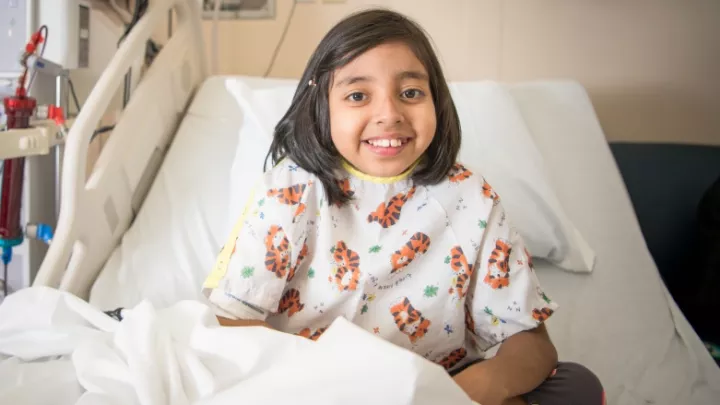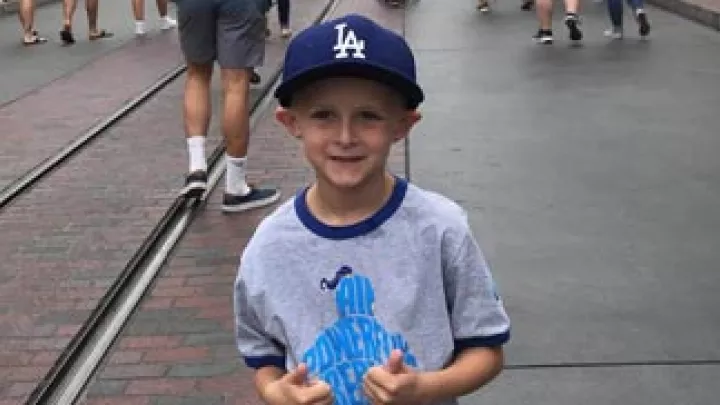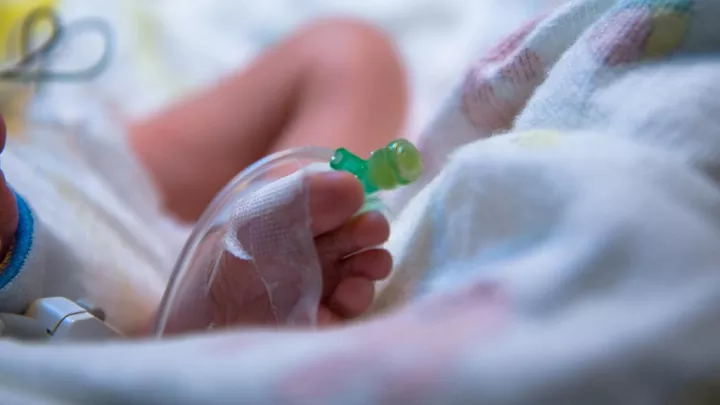
What is Biliary Atresia and How Can We Help Children Diagnosed With It?
In addition to providing world-class care for children diagnosed with biliary atresia, physicians in the Liver Transplant Program at Children’s Hospital Los Angeles are trying to understand biliary atresia and find better ways to treat it.
What is biliary atresia?
Biliary atresia is a liver disease that causes inflammation and scarring of the bile ducts outside of the liver and in the liver. Ultimately, it damages, scars and blocks the bile ducts. In healthy babies, bile ducts carry bile from the liver to the gallbladder and eventually to the small intestine. Bile includes chemicals that the body is trying to get rid of. When the bile ducts are blocked, noxious chemicals collect in the liver. This is called cholestasis. The scarring can lead to cirrhosis (severe scarring) by 6 to 12 months of age. When a liver is badly scarred it cannot do its job.
When can my child get biliary atresia?
Biliary atresia only occurs in young infants (less than 3-4 months of age).
What are the symptoms of biliary atresia?
Infants with biliary atresia have jaundice (yellow eyes or skin). Jaundice is normal in many newborns, and should typically clear by two weeks of age. Any baby with jaundice that lasts past two weeks of age should be seen immediately by the child’s doctor. The doctor can check your baby and baby’s blood to see if the liver is working normally. Infants with biliary atresia may also have stool color that is lighter than normal. This is called “acholic stools” and is the result of bile not getting to the intestines. Infants with biliary atresia may also have dark urine, a large liver, or a large spleen.
How is biliary atresia diagnosed?
To help make the diagnosis, the medical team may order a number of tests for your baby, including
- blood and urine tests looking for other common or treatable causes of jaundice
- an ultrasound to look at the bile ducts, gall bladder and liver
- a liver biopsy
- a HIDA scan (hepatic scintigraphy) to see if bile is getting into the intestine
If these tests point to a possible diagnosis of biliary atresia, your doctor may order the intraoperative cholangiogram, a surgical operation where dye is injected directly into the gallbladder to get the best look possible at the bile ducts. If bile ducts cannot be seen by this testing, then a surgical operation, called a Kasai procedure, is performed to treat the biliary atresia.
How common is biliary atresia?
Biliary atresia is rare and affects 1 in 8,000 to 1 in 18,000 live births worldwide. About 10 to 20 percent of infants with biliary atresia have abnormalities in other organs, such as heart defects or issues with their spleen.
What causes an infant to have biliary atresia?
The cause of biliary atresia is unknown. Some doctors think a viral infection occurring before or just after birth can lead to biliary atresia. Others think it may be caused by an overly-active immune system, a problem in development of the bile duct, or a noxious chemical that damages the bile duct. Others think a genetic reason or a combination of these things could cause biliary atresia.
How is biliary atresia treated?
Infants are typically treated with an operation known as a Kasai procedure or hepatoportoenterostomy. In this procedure, the blocked bile ducts are removed and a segment of the small intestine is directly connected to the liver in place of the bile duct. This allows bile to leave the liver and enter the intestine. Other supportive medical treatments are recommended sometimes before and usually after the Kasai procedure. These include making sure nutrition is ideal by using infant formulas with higher calories or certain types of fat. Doctors might also use additional vitamins, a synthetic bile acid, and low-dose antibiotics to prevent bacterial infection of the bile ducts.
What is the outlook for infants diagnosed with biliary atresia?
The chance of a successful Kasai procedure is best if the procedure is done before 30 to 45 days of age. Occasionally, infants who are not diagnosed until after 3 to 4 months of age and already have advanced liver damage cirrhosis at the time of diagnosis, do not have a Kasai procedure. These infants are then listed for a liver transplant without undergoing a Kasai.
If the Kasai procedure is successful, jaundice will disappear and bilirubin levels will return to normal. This happens in nearly half of all infants having a Kasai procedure. Even with the Kasai procedure, many children with biliary atresia still develop more scarring long-term in the liver and eventually need a liver transplant.
Biliary atresia is the most common reason for liver transplantation in children. About half of infants who undergo a Kasai procedure will still need a liver transplant by three years of age. In about one quarter of infants, the jaundice will go away at first, but those children will need liver transplantation by the teenage years because of slowly progressive liver scarring. Approximately one-quarter of babies who have the Kasai procedure will survive to their twenties without needing liver transplantation.
Although liver transplantation is a major surgical procedure requiring long term immunosuppression medicines, this life-saving procedure has dramatically improved survival rates of infants and children with biliary atresia. Long-term survival after liver transplantation for biliary atresia is over 90 percent. Almost half of the children with biliary atresia transplanted at CHLA receive their liver grafts from a living donor.
How can I support research to help children with biliary atresia?
CHLA actively participates in studies designed to improve care for infants and children with biliary atresia. There are basic studies that simply ask about a child’s family history to acquire information that can help doctors and scientists understand this condition and it’s natural history. Participants will be asked to allow study personnel to obtain information from medical records and an interview, and to collect blood, urine, and tissue samples when clinically indicated. All of the information obtained in these studies is confidential and no names or identifying information are used in the study.
There are also studies of new treatments for childhood liver diseases. To find out more visit SPLIT and ChiLDREN Consortium.


